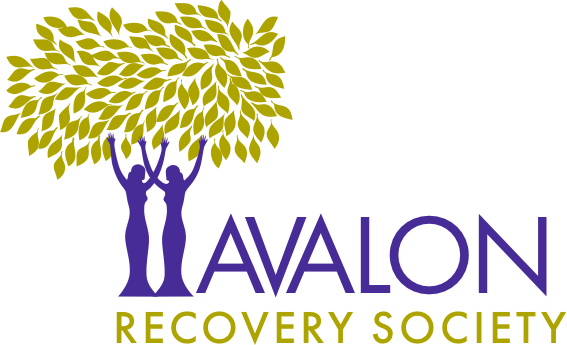
We want to recognize World No Tobacco Day, but truly, everyone should aim to make every day tobacco-free! Easier said than done, right? Well, if you are looking to cut tobacco out of your life, this blog is for you. We will be discussing ways to prepare to quit, tips on quitting, and give you some motivation to start or continue your journey. Smoking tobacco is not only a physical addiction but a psychological habit that for many is a deeply ingrained part of the daily routine. To successfully stop consuming tobacco, both of these aspects must be addressed.
A 2019 Canadian survey found that 12% – or 1.9 million – women had used a tobacco product (including cigarettes, cigars, little cigars or cigarillos, chewing tobacco, water-pipe tobacco and pipes) in the previous 30 days. Further, 14% or 2.2 million Canadian women have tried vaping. If you’re included in these statistics and trying to quit, keep reading!
To start, if you are unsure of what tobacco is and what it includes, tobacco is the preparation of the nicotine-rich leaves of a plant which are cured by drying and fermentation and then used for smoking or chewing. Tobacco use is a cause or risk factor for respiratory illnesses and many deadly diseases (often cancer), particularly affecting the heart, liver and lungs. And if you wonder why you’ve become addicted, that would be because nicotine is the main addictive chemical in tobacco. Consuming nicotine causes a rush of adrenaline when absorbed in the bloodstream or inhaled through cigarette smoking and triggers an increase in dopamine, aka the “happy” chemical.
Now that you know why it’s so hard to part ways with tobacco, let’s get you started on a path for success.
Preparation
Tobacco cravings can be intense and hard to ignore, but remember that as strong as they feel in the moment, urges will pass within five to ten minutes. Giving in to one temptation may seem insignificant, but don’t let yourself go down that path. More often than not, one indulgence will lead to many more, and your quitting process will be derailed
In preparation for quitting tobacco, you can also try keeping a craving journal. This can help you identify patterns around your use and things or environments that trigger your habit. If you have a quit date in mind, start keeping a log of your routine a week in advance so that you can be equipped with knowledge about yourself and your addictive behaviours. Questions you can ask yourself in your journal include: What time of day or part of my routine was it? How intense was the craving on a scale from one to ten? Were you with anyone or alone? How did you feel during and after smoking?
Knowing that your body may experience withdrawal symptoms, you can also prioritize eating a well-balanced diet, resting extra, drinking plenty of water to detox the body, exercising frequently, and taking vitamins to help you regain energy and nutrients.
Preparation can also include:
- Making an appointment for a physical with your doctor and letting them know you intend on quitting;
- Educating yourself on addiction;
- Scheduling a quit date; and
- Deciding if you want to quit cold turkey or take a slower approach.
Tips to quit
Nicotine replacement therapy
First off: speak to your doctor if you’re considering nicotine replacement therapy. They are intended to curb the urges to use nicotine and to lessen the effects of nicotine withdrawal which can include headaches, moodiness, and low energy. They do so by providing small and consistent doses of nicotine to the body but without the harmful tars and poisons in cigarettes. Gums, inhalers, nasal sprays, and lozenges are options that work quickly but only for a short period of time to relieve intense cravings, while over-the-counter patches provide a daily dosage that reduces gradually as you switch to lower-dose patches until cravings are gone.
Replace all reminders
The comforting experience of having something in your mouth can be satisfied by replacing cigarettes or other tobacco products with gum, hard candy, nuts or raw veggies. Maybe you need something to do with your hands, and if that’s the case, try squeezing a stress ball for some tactile stimulation. If you’re in the routine of smoking at a certain time of day, often after meals, find a replacement activity such as taking a walk or brushing your teeth. Part of this process is also cleaning out your home, car, and other commonly visited spaces of things that enable using or retain a triggering smell of smoke (giving away lighters and ashtrays, washing clothes, carpets and upholstery, using air fresheners, etc.).
Get active
Physical activity provides many benefits, including: distracting from cravings, reducing the intensity of such cravings, and easing withdrawal symptoms. And it doesn’t have to be anything long or strenuous – even short bursts of activity can alleviate a tobacco craving. Other suggestions include completing household chores such as vacuuming or emptying the dishwasher, walking your dog, or gardening outdoors.
Unwind and manage stress
Smoking or using other tobacco products is often used as a coping response to stress or anxiety experienced in everyday life. When that option is eliminated, it’s important to find a new alternative way of handling stressors. If you are smoking as a way of handling painful or difficult feelings you’re experiencing, be prepared to manage those in a healthier way. Sit down and spend a few minutes thinking about how you plan to deal with those situations and prevent yourself from turning to the quick ease of a cigarette. This could be in the form of breathing exercises, yoga, calming music, or massages. If possible, it might also help to avoid stress-producing situations during the first few weeks post-quitting and relying on hobbies and activities that make you feel good and blow off some steam.
Ask for support
You don’t need to quit in silence. Lean on your loved ones to support you and enable your long-term success in removing tobacco from your life and daily routine. Family members, friends, or support group peers can help you resist urges and encourage you to stay committed when you’re feeling tempted to use. It is however important that they are positive motivators for you. Ask them for positive reinforcement versus the nagging approach! Professional help is also available through support communities or counsellors, particularly those who use behavioural therapy, which is a specific type of counselling that helps you learn new coping skills, break rituals and habits, and stick to quitting strategies.
Focus on your motivators
If you’ve now come to the place where you want to quit consuming tobacco, you must be driven by something strong – whether it’s for your health, for the health of your family and friends, to save money, or anything else. Write these down to remind yourself of the reasons why you want to stop smoking and resist all cravings.
Trick yourself
Here are some other little tricks you can try when experiencing a craving: brushing your teeth (the clean feeling can help reduce urges) or drinking a big glass of water slowly to encourage the craving to pass and keep you hydrated to minimize nicotine withdrawal symptoms.
Try until it sticks
It can take many attempts at quitting before it sticks. If you do use a tobacco product in response to a particularly challenging craving, try not to get discouraged or give up on yourself. Instead, think about the circumstances and emotions that led to that lapse, and use the learnings as motivation to prevent it from happening again and re-affirm your commitment to quitting. And the amazing thing is that the health benefits can be reaped immediately after you quit tobacco. In just 20 minutes, your heart rate will return to normal, within a day your blood’s carbon monoxide levels will also regulate themselves to normal, in 2-3 weeks your odds of having a heart attack will lower, and in the long run, your chance of getting lung or other cancers will go down.
In summary
Overcoming a tobacco addiction presents particular challenges – consuming tobacco products can be a habit that has persisted for years if not decades, and quitting involves not only overcoming a physical addiction but deep-rooted daily rituals and stress management strategies. The process of changing your lifestyle and developing more productive habits will take long-term commitment, so be kind to yourself through the process, practice positive affirmations, and believe in yourself! It’s also never too late to quit – quitting tobacco use at any age will improve your life and health.
If you’re part of the recovery community, we recognize that smoking cigarettes is often part of the “culture”. But are the risks that arise from smoking cigarettes (in recovery) worth it when you’ve worked so hard to lead a healthier life in other ways? That being said, if you are first getting sober or have any health concerns, please consult with a physician to help you with your plan to quit smoking.
Check out our other blogs, podcast, and website for other resources on recovery, self-care and other addictions.
Sources
https://www.canada.ca/en/health-canada/services/canadian-tobacco-nicotine-survey/2019-summary.html
https://www.mayoclinic.org/healthy-lifestyle/quit-smoking/in-depth/nicotine-craving/art-20045454
https://www.webmd.com/smoking-cessation/ss/slideshow-13-best-quit-smoking-tips-ever
https://www.medicalnewstoday.com/articles/241302#nicotine-replacement-therapy
https://www.verywellmind.com/tips-for-when-you-quit-smoking-impatience-2824899
https://www.lung.org/quit-smoking/i-want-to-quit/top-tips-for-quitting-smoking
https://www.everydayhealth.com/hs/stop-smoking/best-and-worst-foods-quit-smoking/

